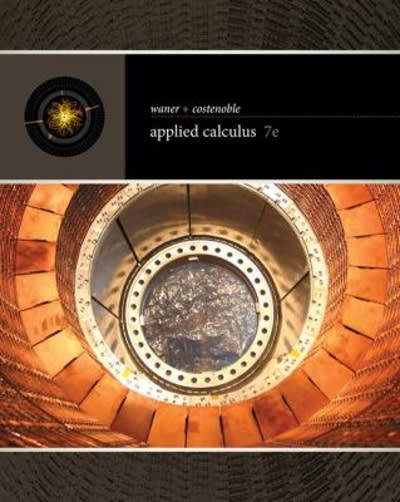Question
c. A stream competitor includes two engines. The probability that the ensuing engine limits positively during its arrangement life is 0.96, and the probability that
c. A stream competitor includes two engines. The probability that the ensuing engine limits positively during its arrangement life is 0.96, and the probability that at any rate one if the two engines does so is 0.98 and the probability that both engine do so is 0.935. Given that the primary engine limits positively all through its arrangement life, what is the probability that the second one also?
- K- -
In a preliminary of repeating mice, a geneticist has obtained 120 gritty shaded mice with pink eyes, 48
hearty hued mice with gritty shaded eyes, 36 white mice with pink eyes and 13 white mice with natural hued eyes.
Theory predicts that these sorts of mice should be obtained with the inherited degree of 56%,
19%, 19% and 6% independently. Test the similitude of data with theory, using 0.05 level of
significance.
Accept you are dealt with a five-card hand from a standard deck. Find the probability of all of the going with five-card hands.
Express your answers with 4 gigantic digits, using intelligent documentation when essential.
d. starting a jack and thereafter four number cards, in a particular request
(Hint: Use "ward AND" formula from fragment 7B.)
Answer: ____________
Consider a lottery with 100 million tickets where each ticket has a unique number. Each ticket is sold for $1, and one ticket is drawn for a lone prize of $75 million (and no other prizes). In case you were to spend $1 million to purchase 1 million lottery tickets, what may the most likely result be?
A) You would be the lottery champ. Buying 1 million tickets gives you a 1% chance of winning, which is significantly higher chance than people who got one ticket have.
B) You would win back $750,000 of your $1 million. The typical worth in buying 1 million tickets is $750,000.
C) You would be the lottery champ. Buying 1 million tickets extends your chances of winning by 1 million percent.
D) You would lose your entire $1 million. If you spend $1 million on something, you have $1 million shy of what you had before. Therefore, you lost your entire $1 million.
E) You would lose your entire $1 million. Notwithstanding the quantity of tickets are bought, the chance of winning the lottery is at this point 1 out of 100 million.
F) You would win back $750,000 of your $1 million. You will lose around a quarter per ticket, so you'll twist up with $750,000 in the long run.
A protection organization understands that the ordinary cost to amass a home in another California area is $97,656 and that in a particular year there is a 1 of each 51 chance of a quickly spreading fire obliterating all of the homes in the locale. Considering these data and tolerating the protection office needs a positive expected worth when it sells approaches, what is the base the association should charge for fire insurance plans in this locale?
A) The association should charge $97,656 every year in light of the fact that the whole house will be obliterated in the event of a quickly spreading fire.
B) The association should charge $1915 every year in light of the fact that the association's formula for yearly costs is the ordinary cost apportioned by the chance of a quickly spreading fire.
C) The association should charge $51 every year in light of the fact that there is a 1 of each 51 chance of a quickly spreading fire each year.
D) The association should charge $1915 every year since this is the typical worth.
E) The association should charge $51 every year since this is the typical worth.
F) The association should charge $97,656 every year since this is the typical worth.
Step by Step Solution
There are 3 Steps involved in it
Step: 1

Get Instant Access to Expert-Tailored Solutions
See step-by-step solutions with expert insights and AI powered tools for academic success
Step: 2

Step: 3

Ace Your Homework with AI
Get the answers you need in no time with our AI-driven, step-by-step assistance
Get Started


